
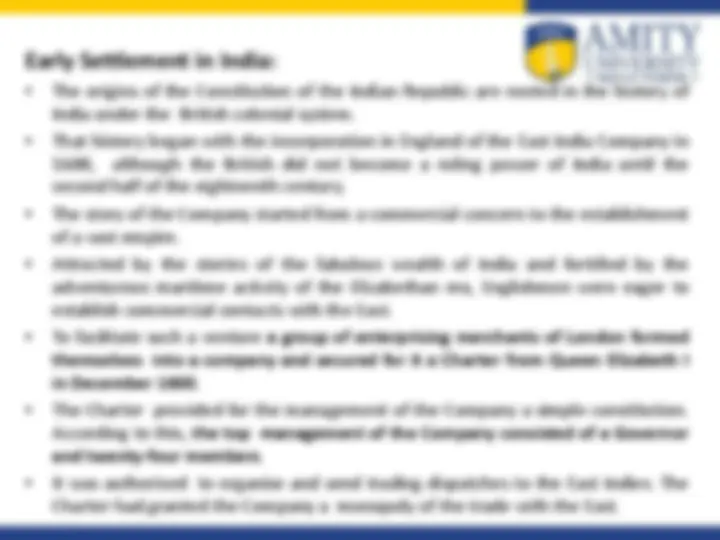




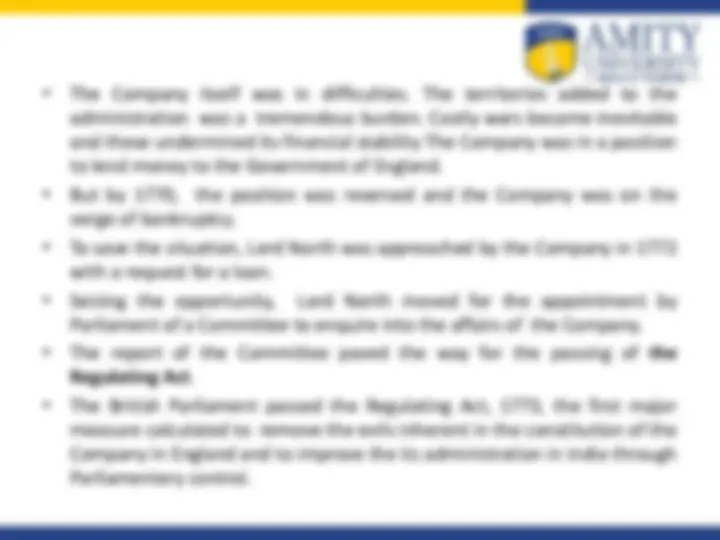
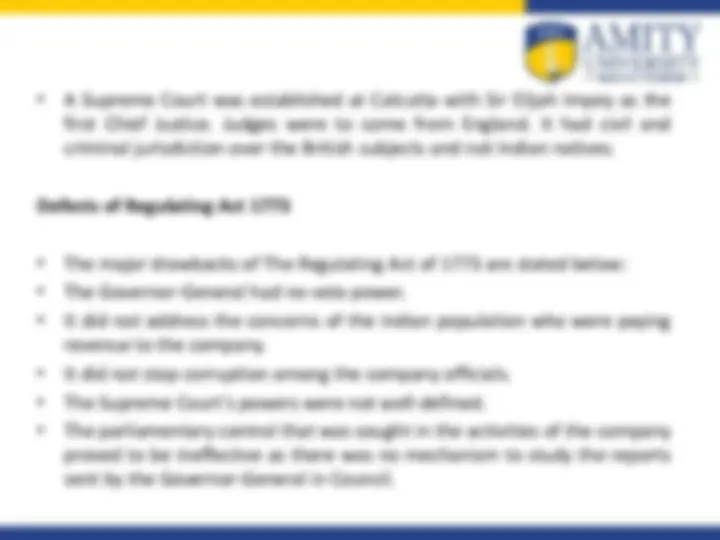
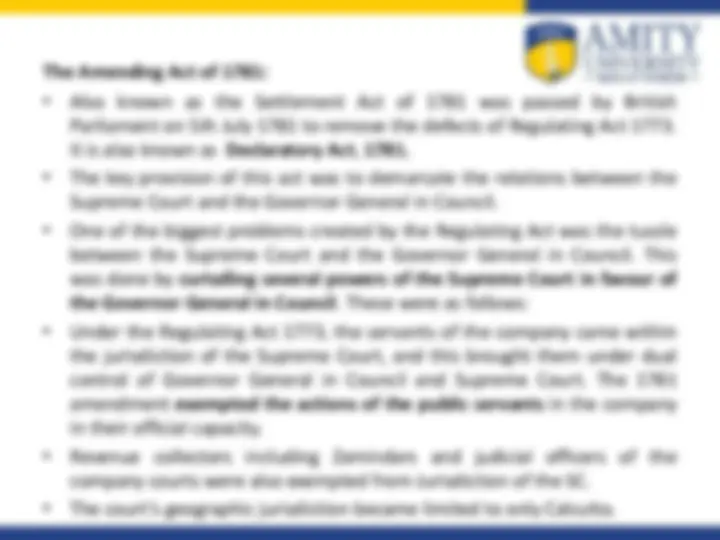
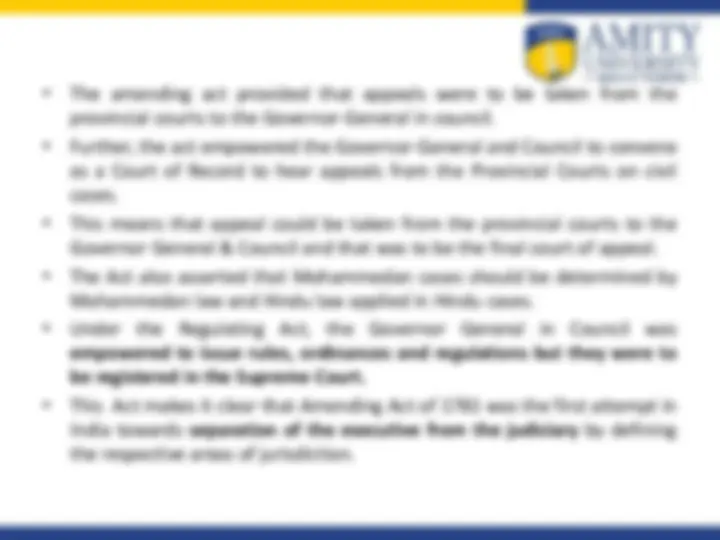

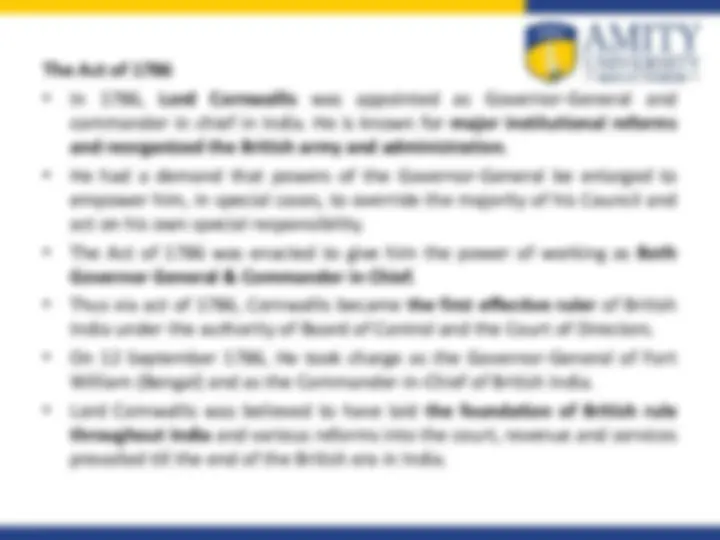


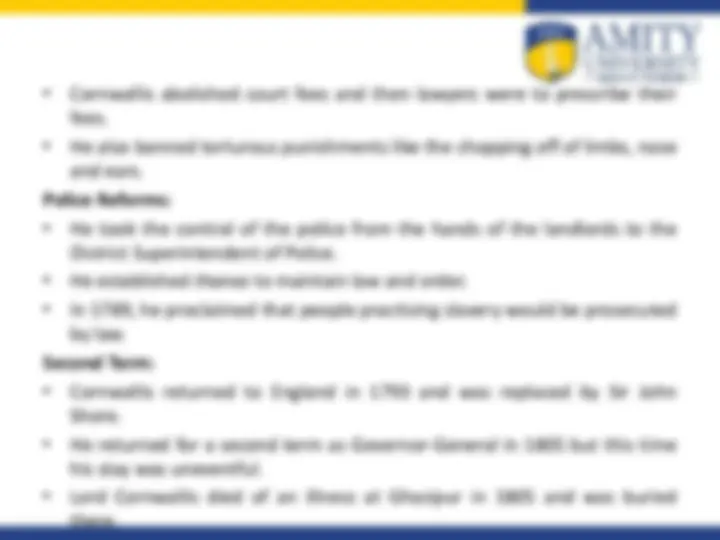
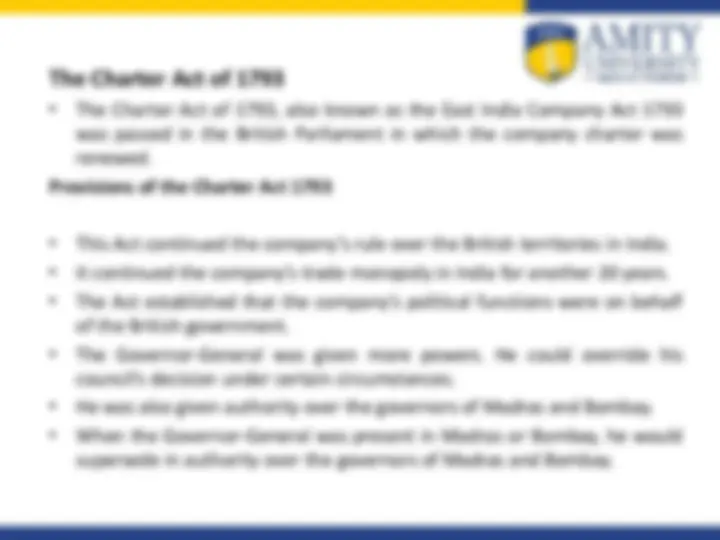
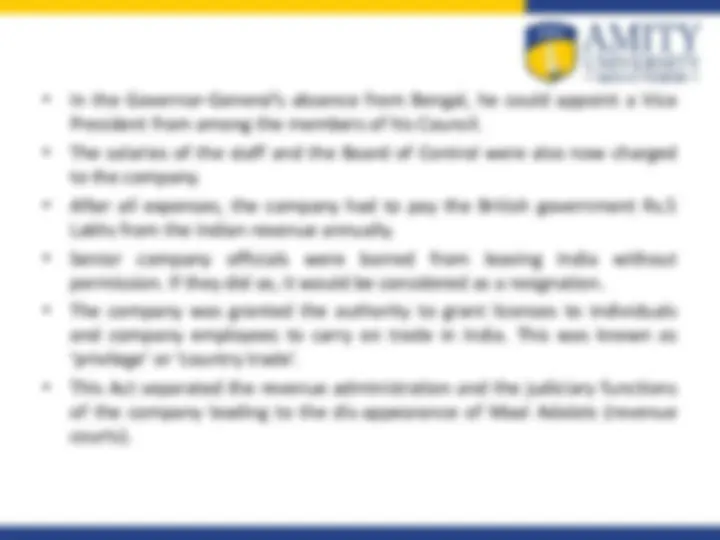
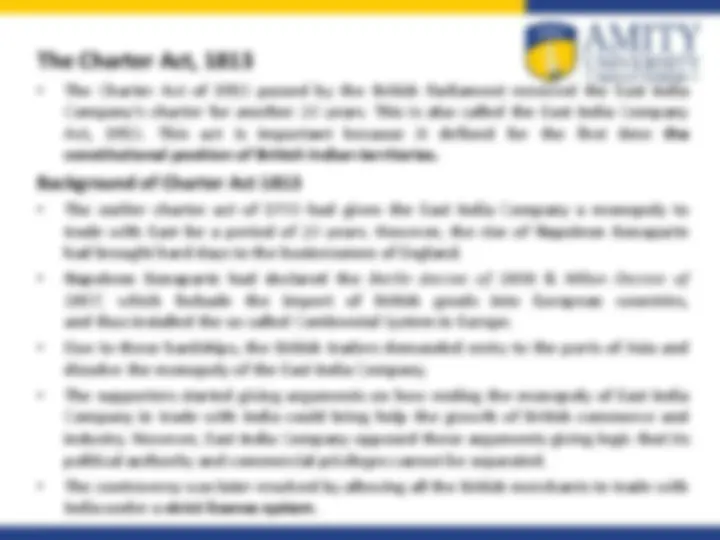


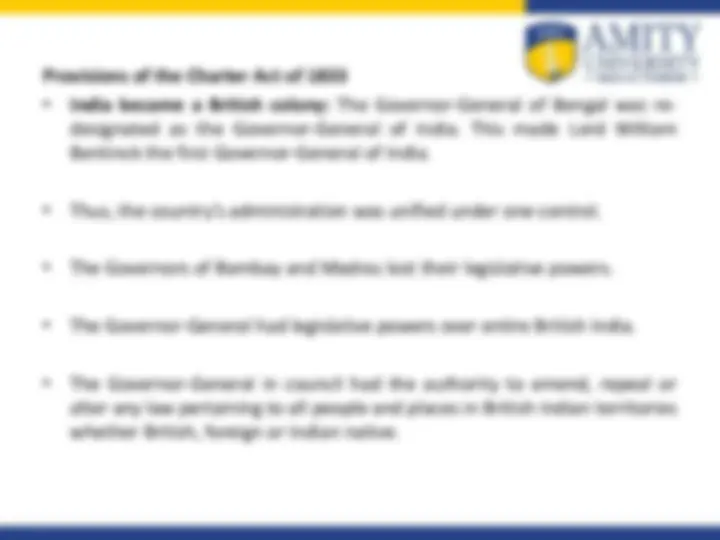



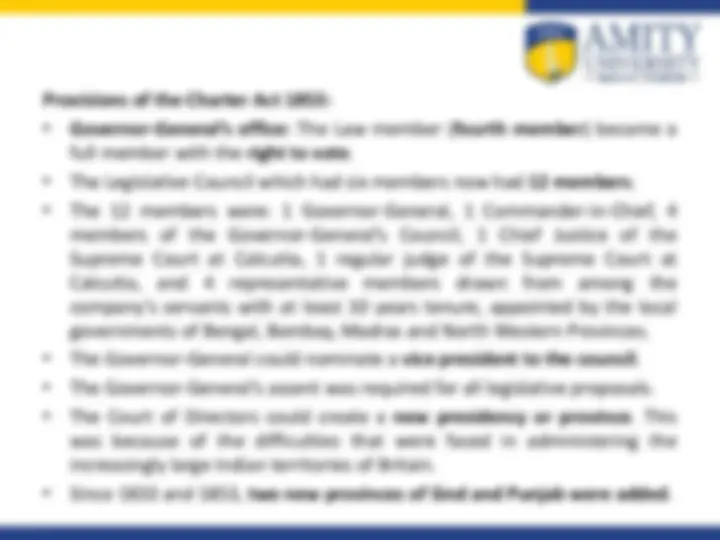
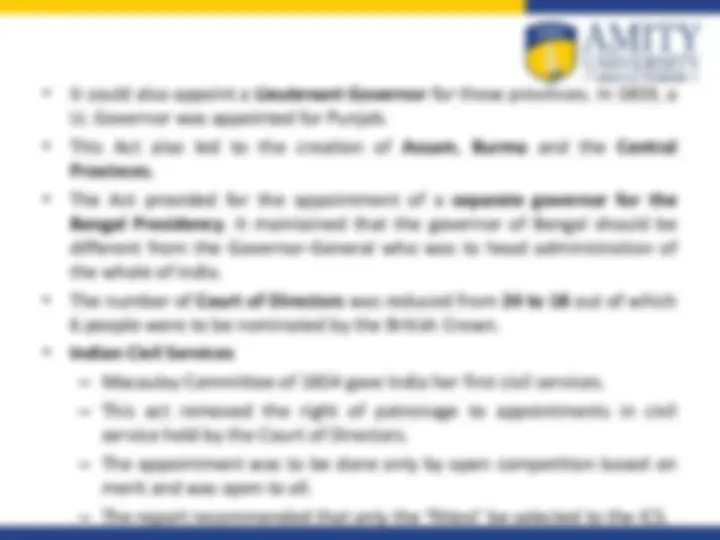
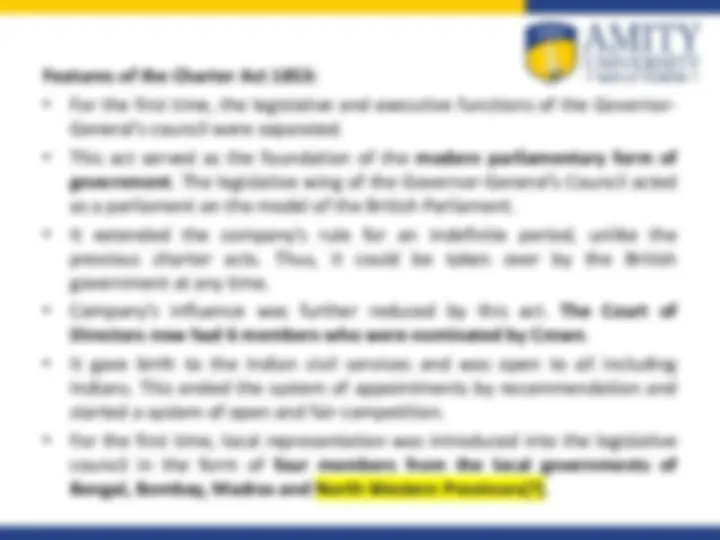


Study with the several resources on Docsity

Earn points by helping other students or get them with a premium plan


Prepare for your exams
Study with the several resources on Docsity

Earn points to download
Earn points by helping other students or get them with a premium plan
Community
Ask the community for help and clear up your study doubts
Discover the best universities in your country according to Docsity users
Free resources
Download our free guides on studying techniques, anxiety management strategies, and thesis advice from Docsity tutors
Notes of constitutional history
Typology: Lecture notes
1 / 34

This page cannot be seen from the preview
Don't miss anything!



























Weightage (%)
Module I
10%
25%
25%
Module IV
25%
Module V
Defects of Regulating Act 1773
Pitt ' s India Act 1784:
Provisions of the Acts
Features of the Act:
The Act of 1786
Lord Cornwallis:
Major Reforms Introduced by Lord Cornwallis: